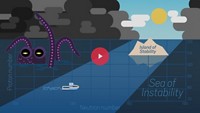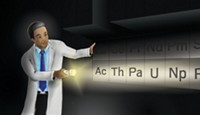Advertisement
Grab your lab coat. Let's get started
Welcome!
Welcome!
Create an account below to get 6 C&EN articles per month, receive newsletters and more - all free.
It seems this is your first time logging in online. Please enter the following information to continue.
As an ACS member you automatically get access to this site. All we need is few more details to create your reading experience.
Not you? Sign in with a different account.
Not you? Sign in with a different account.
ERROR 1
ERROR 1
ERROR 2
ERROR 2
ERROR 2
ERROR 2
ERROR 2
Password and Confirm password must match.
If you have an ACS member number, please enter it here so we can link this account to your membership. (optional)
ERROR 2
ACS values your privacy. By submitting your information, you are gaining access to C&EN and subscribing to our weekly newsletter. We use the information you provide to make your reading experience better, and we will never sell your data to third party members.
Analytical Chemistry
Los Alamos scientist explores the outer reaches of the periodic table
Stosh Kozimor discusses his work with actinides and how these radioactive elements might help treat cancer
by Mark Peplow, special to C&EN
July 18, 2017
| A version of this story appeared in
Volume 95, Issue 30
Kozimor

If the periodic table is an atlas for chemistry, then the actinides should surely be labeled “Here be dragons.” All are radioactive, only thorium and uranium are found in appreciable quantities, and most of the rest are produced by the sort of modern-day alchemy that relies on nuclear reactors or particle accelerators.
Vitals
Studies: B.Sc., Fort Lewis College, 1999; Ph.D., University of California, Irvine, 2005
Best part of his job: Mentoring. I am inspired by the hard-working and creative people at Los Alamos National Laboratory, and the students are especially fun.
Favorite molecule: I am fascinated by the actinium-oxygen interactions in actinyl compounds, and I love huge multimetallic clusters. But my favorite compounds are those we haven’t made yet. For example, Nikolas Kaltsoyannis at the University of Manchester recently published a calculation on AcHe173+ (Angew. Chem. Int. Ed. 2017, DOI: 10.1002/anie.201700245). Imagine making that molecule.
Hobbies: I like sneaking off with my kids to get a free scoop of ice cream at the local grocery store and grilling in the backyard while I watch the boys run through the park. I love everything outdoors with my family.
Stosh Kozimor, a staff scientist at Los Alamos National Laboratory, is one of a hardy band of scientists unafraid of taming these dragons. Mark Peplow spoke with him about the challenges of doing research on the actinides and their potential application in cancer therapy.
What attracted you to studying the actinides?
I grew up in New Mexico, and with Los Alamos being so close, there was always talk about the Cold War, nuclear power, and the Manhattan Project. I was turned off, I guess, by that. But there was also an allure to it. I was curious about the problems and the issues, and I just kept coming back to it.
How difficult is it to work with actinides?
When you have highly radioactive samples, you want to limit your personal exposure to them, and the material is usually very scarce and incredibly valuable. So there’s a lot of up-front work using nonradioactive surrogates to make sure the entire process is well rehearsed and your hands develop muscle memory. It takes an incredible amount of mental focus just to load a cuvette because you don’t want anything to splatter.
A lot of times we’ll work in pairs to carry out a delicate manipulation, so you need a second person whom you can get along with and who wants to work on that project with you. You have to have a healthy respect for the material. If it doesn’t make you anxious, you probably shouldn’t be handling it.
What’s the goal of your research?
We’re interested in understanding how covalent or ionic the bonds are between actinides and ligands and how that changes along the actinide series. It’s one of the most fundamental questions in actinide science. It’s important for a lot of reasons: Covalency is invoked in explaining the fate and transport of actinides in the environment—how they behave in water or soil, for example—in trying to build good ligands for them, and in separating them from each other.
Aside from fundamental studies, are you looking into novel applications for actinides?
Isotopes that emit α particles have the potential to treat cancers. You have to attach the radioisotope to a chelator, a molecule that binds the actinide and holds onto it in someone’s body. Then you attach that to a biological targeting vector that takes it to the tumor. Actinide isotopes such as actinium-225, thorium-227, and uranium-230 are short-lived, so they’re not a long-term toxic threat, and α particles only penetrate a short distance into biological tissue, so there could be fewer side effects than nontargeted treatments.
Actinium-225 has a 10-day half-life. It decays to give off an α particle, and then its decay products subsequently produce three more α particles. That’s four α particles for every actinium atom, so you get a lot of bang for your buck.
We’re trying to develop better chelators for holding on to actinium as we put it in the body. As a baseline, we needed to characterize how actinium coordinates to water molecules, even though other ligands may be more important for controlling the fate and transport of actinium in the body.
We made the first bond distance measurements for actinium coordination complexes (Nat. Commun. 2016, DOI: 10.1038/ncomms12312), and it’s surprising how long those distances are in the actinium-water complex: an average of 2.63 Å. The coordination number was also higher than expected, with 10.9 ± 0.5 water molecules in each actinium’s inner coordination sphere (ACS Cent. Sci. 2017, DOI: 10.1021/acscentsci.6b00356). The error bar on our measurement is quite high, but the general trend is that it’s going to take a relatively large ligand to cover all those coordination sites, which is what you need to chelate actinium effectively in the body.
Researchers already have little chelators that are good at binding small lanthanides such as gadolinium, but there’s no possible way they’re the right size for actinium—actinium is the largest +3 oxidation-state metal on the periodic table. So our main focus now is to design and build macrocycle compounds, which are larger, to reach around and hug it tighter. We’re hoping to get some initial results out soon.
Mark Peplow is a freelance writer. A version of this story first appeared in ACS Central Science: cenm.ag/kozimor. This interview was edited for length and clarity.





Join the conversation
Contact the reporter
Submit a Letter to the Editor for publication
Engage with us on Twitter